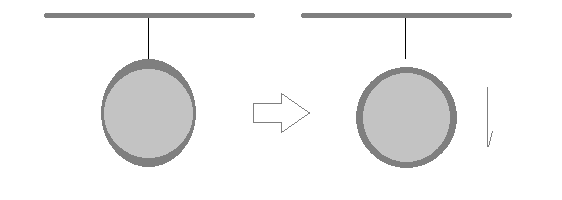A proper explanation needs to involve something more physical in the sense that it can be envisioned as the interaction of things.
My personal guess as to where potential energy is stored is that it is inside the physical object itself, and that it is specifically stored in a widening of the orbits of electrons around atomic nuclei.
Close to Earth, electron orbits of objects are compressed. Using energy to lift an object up, an object absorbs energy through a widening of its electron orbits. The change in gravity due to the change in elevation allows electron orbits to widen by a tiny bit, and in doing this objects absorb energy.
Dropping an object, it gains kinetic energy. However, since there is no net gain or loss of energy during the fall, the electron orbits remain unchanged.
It is not until an object hits the ground that the electron orbits have to adjust. On impact, the electron orbits contract abruptly, releasing photons in the process.
High energy impacts release both visible light and lower energy heat carrying photons while low energy impacts release low energy photons only.
What should be noted in this explanation is that it works for both potential energy and kinetic energy. In both cases, energy is stored as a widening of electron orbits. This means that the two forms of energy have the exact same physical effect on objects.
On further analysis, I've come to the conclusion that energy in all its forms are stored as size at the subatomic. This is explained in detail in the chapter on Kinetics in my latest book.
 |
| Energy stored as size at the subatomic |
No comments:
Post a Comment